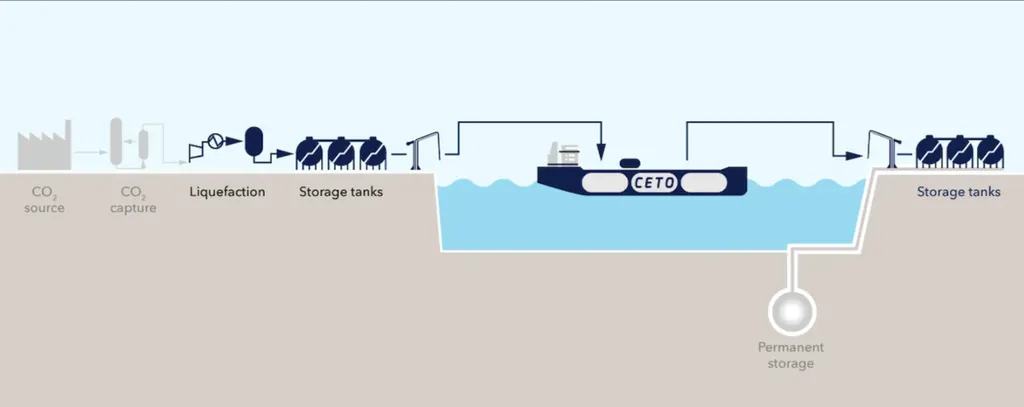In the rapidly evolving landscape of carbon capture and storage (CCS), the maritime transport of liquefied carbon dioxide (LCO2) is gaining traction as a critical component of the energy transition. A recent study published in the *International Journal of Naval Architecture and Ocean Engineering* (translated from Korean) sheds light on the intricate balance between safety and efficiency in the design of LCO2 storage tanks, offering valuable insights for the energy sector.
The research, led by Younseok Choi from the School of Space Engineering Sciences at Kyungpook National University in South Korea, focuses on IMO Type C pressure vessels, which are widely used for LCO2 storage. The study highlights a significant challenge: the discrepancy between regulatory vapor pressure requirements and actual operational pressures. This gap often leads to complex design processes and iterative modifications, which can hinder the development of cost-effective and efficient LCO2 transport systems.
Choi and his team developed a thermodynamic framework to assess the differences between rule-based and actual vapor pressures. Their simulations, which covered tanks ranging from 1000 to 5000 cubic meters, revealed that smaller tanks (1000–2000 cubic meters) may exceed regulatory pressure limits, necessitating enhanced insulation or advanced pressure control systems. In contrast, larger tanks (3000–5000 cubic meters) operate under conservative rule-based limits, suggesting potential for operational adjustments that could optimize performance.
“The findings offer an early-stage design guide that balances efficiency and regulatory compliance,” Choi explained. “This is crucial for supporting the safe and economical development of marine LCO2 transport systems.”
The implications of this research are far-reaching for the energy sector. As the demand for CCS technologies grows, the ability to design and operate LCO2 storage tanks efficiently will be paramount. By addressing the discrepancies between regulatory and operational pressures, this study provides a roadmap for optimizing tank design, reducing costs, and enhancing safety.
“Our results highlight the importance of tailored design approaches for different tank sizes,” Choi added. “This could lead to significant advancements in the commercial viability of LCO2 transport, ultimately supporting the broader goals of carbon neutrality.”
As the energy sector continues to explore innovative solutions for carbon management, this research offers a timely and practical contribution. By bridging the gap between regulatory requirements and operational realities, Choi’s work paves the way for more efficient and cost-effective LCO2 transport systems, supporting the global transition to a low-carbon future.

